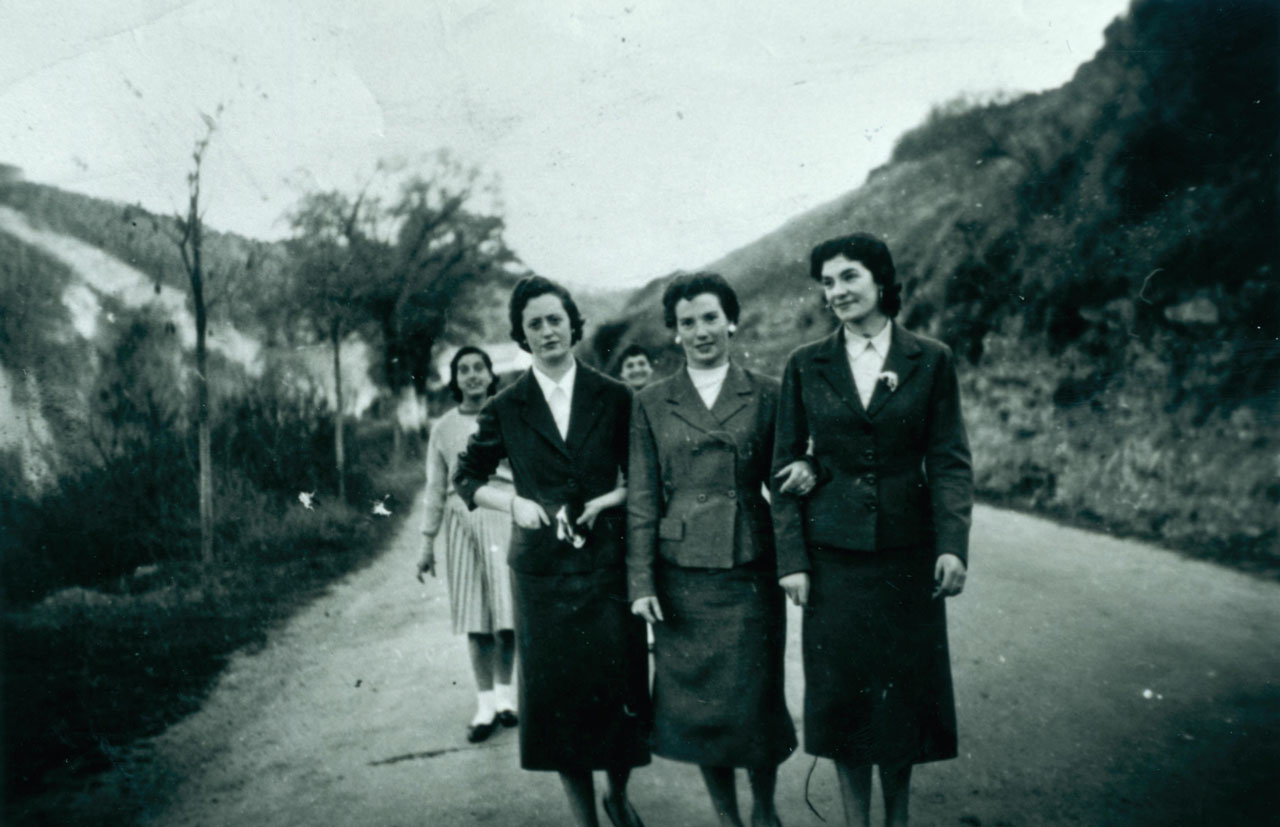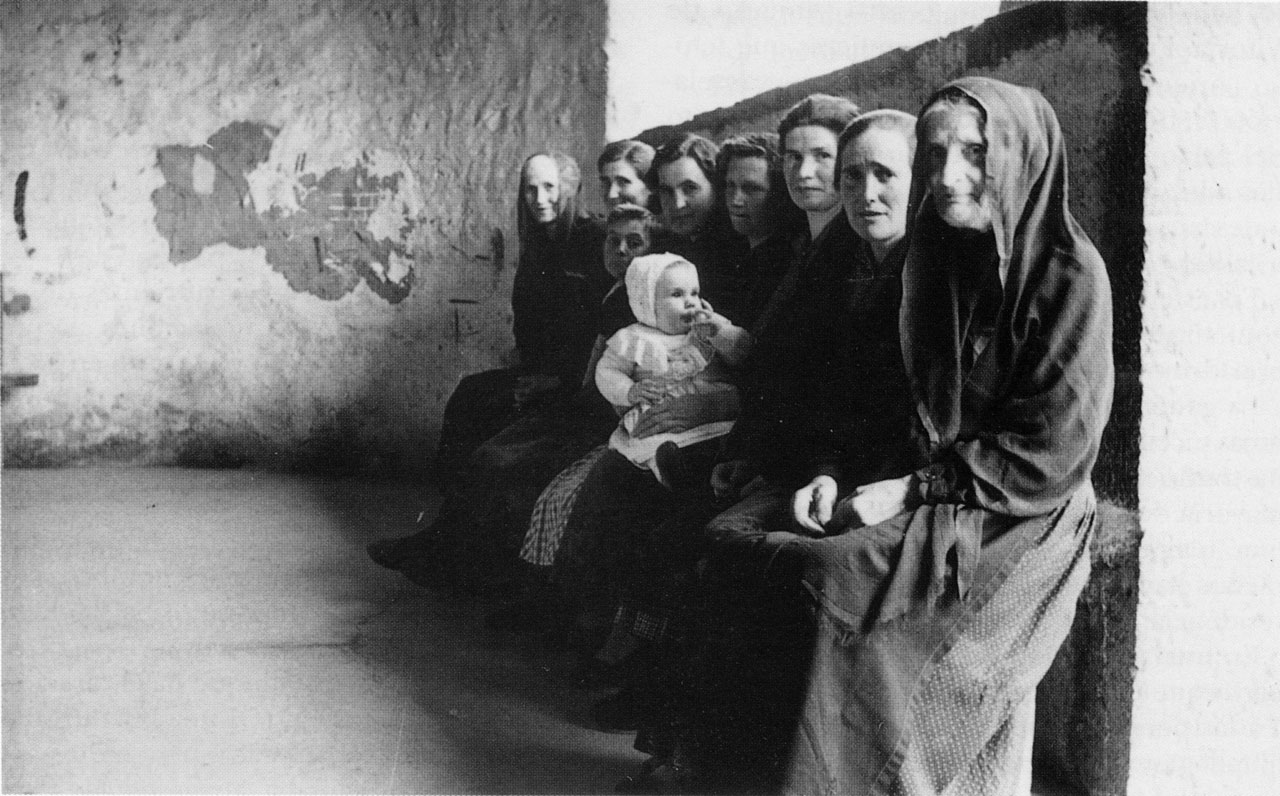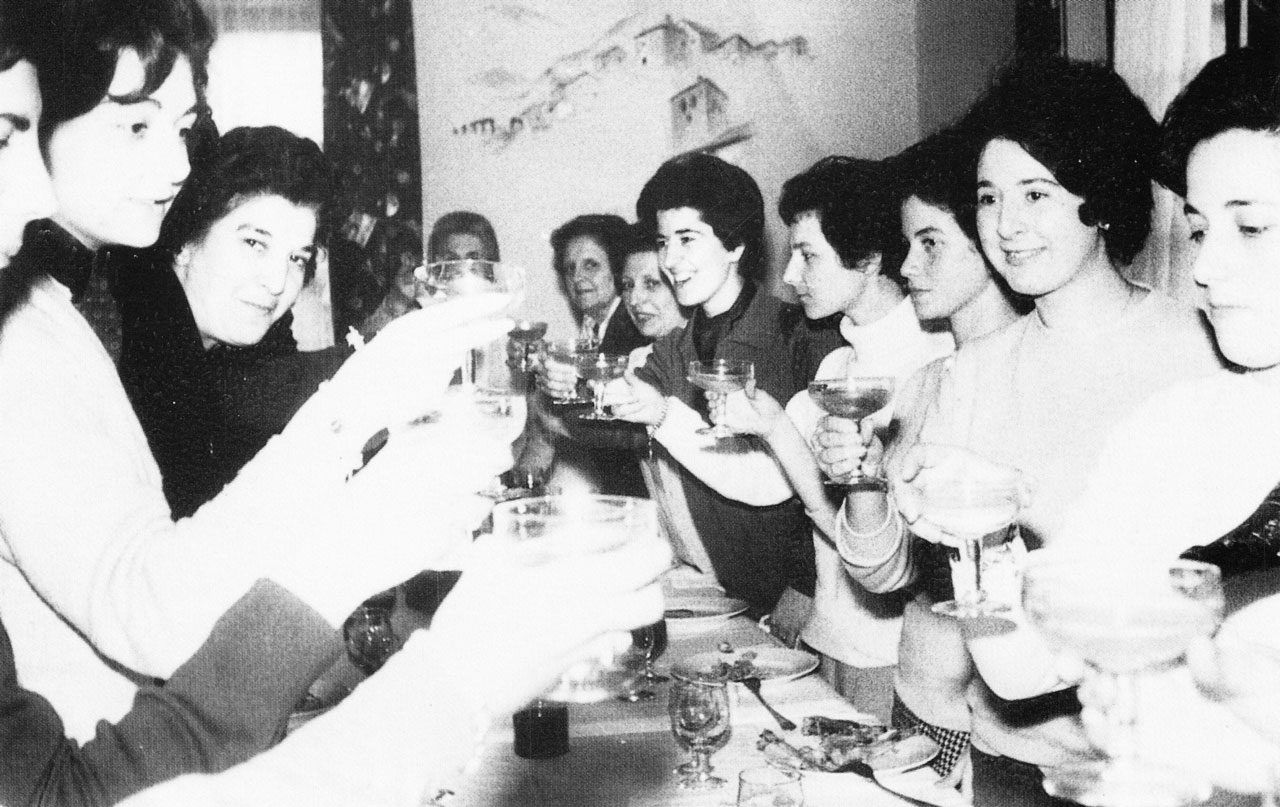Diferencia entre revisiones de «Ritos del nacimiento al matrimonio en vasconia/en»
De Atlas Etnográfico de Vasconia
| (No se muestran 21 ediciones intermedias de 2 usuarios) | |||
| Línea 1: | Línea 1: | ||
| + | _LABAYRU_LANDING_ | ||
<languages></languages> | <languages></languages> | ||
| − | |||
| − | + | {{DISPLAYTITLE: Rites from Birth to Marriage in the Basque Country}} {{#bookTitle:Rites from Birth to Marriage in the Basque Country | Ritos_del_nacimiento_al_matrimonio_en_vasconia/en}} | |
| + | |||
==[landing]== | ==[landing]== | ||
| Línea 8: | Línea 9: | ||
===[nacimiento|Rites from Birth to Marriage in the Basque Country|/atlas/nacimiento.png|Significant stages of life and rites of passage; namely, birth and childhood, youth, and the transition from singleness to marriage.]=== | ===[nacimiento|Rites from Birth to Marriage in the Basque Country|/atlas/nacimiento.png|Significant stages of life and rites of passage; namely, birth and childhood, youth, and the transition from singleness to marriage.]=== | ||
====[Ritos_del_nacimiento_al_matrimonio_en_vasconia | Rites from Birth to Marriage in the Basque Country]==== | ====[Ritos_del_nacimiento_al_matrimonio_en_vasconia | Rites from Birth to Marriage in the Basque Country]==== | ||
| + | |||
| + | |||
====[/atlas/nacimiento/Mujeres-en-el-portico-Orozko-1956.jpg|Under the portico. Orozko (B), 1956. Source: Labayru Fundazioa Photograhic Archive.|Ogiaren kurruskua mutikoa izan dadin. <br />''Eat up your crusts to have a boy.''|]==== | ====[/atlas/nacimiento/Mujeres-en-el-portico-Orozko-1956.jpg|Under the portico. Orozko (B), 1956. Source: Labayru Fundazioa Photograhic Archive.|Ogiaren kurruskua mutikoa izan dadin. <br />''Eat up your crusts to have a boy.''|]==== | ||
| + | |||
====[/atlas/nacimiento/Erromeria-jaietan-Zeanuri-1922.jpg|Dancing during patronal celebrations. Zeanuri (B), 1922. Source: Labayru Fundazioa Photograhic Archive: Felipe Manterola Collection.|Young men and women would meet during the Sunday stroll, dances and pilgrimages.|]==== | ====[/atlas/nacimiento/Erromeria-jaietan-Zeanuri-1922.jpg|Dancing during patronal celebrations. Zeanuri (B), 1922. Source: Labayru Fundazioa Photograhic Archive: Felipe Manterola Collection.|Young men and women would meet during the Sunday stroll, dances and pilgrimages.|]==== | ||
| + | |||
====[/atlas/nacimiento/Tarta-nupcial-Durango-1975.jpg|Wedding cake. Durango (B), 1975. Source: Gurutzi Arregi, Etniker Euskalerria Groups.|As was the case of all important events, the wedding banquet, eztei-bazkaria, was celebrated at home.|]==== | ====[/atlas/nacimiento/Tarta-nupcial-Durango-1975.jpg|Wedding cake. Durango (B), 1975. Source: Gurutzi Arregi, Etniker Euskalerria Groups.|As was the case of all important events, the wedding banquet, eztei-bazkaria, was celebrated at home.|]==== | ||
| − | |||
====[/atlas/nacimiento/Familia-troncal-Castillo-Elejabeitia-1930.jpg|Nuclear family. Artea (B), c. 1930. Source: Labayru Fundazioa Photograhic Archive: Felipe Manterola Collection.|Any bachelor, or spinster, traditionally continued to be linked to the homestead and to be an integral part of the family.||]==== | ====[/atlas/nacimiento/Familia-troncal-Castillo-Elejabeitia-1930.jpg|Nuclear family. Artea (B), c. 1930. Source: Labayru Fundazioa Photograhic Archive: Felipe Manterola Collection.|Any bachelor, or spinster, traditionally continued to be linked to the homestead and to be an integral part of the family.||]==== | ||
| Línea 27: | Línea 31: | ||
====[/atlas/nacimiento/Entrada-en-el-templo-Getxo-1996.jpg|Bride’s entrance in church. Getxo (B), 1996. Source: Labayru Fundazioa Photograhic Archive.|Ezkon urte, ero urte. <br />''People go crazy in the year they wed.''||]==== | ====[/atlas/nacimiento/Entrada-en-el-templo-Getxo-1996.jpg|Bride’s entrance in church. Getxo (B), 1996. Source: Labayru Fundazioa Photograhic Archive.|Ezkon urte, ero urte. <br />''People go crazy in the year they wed.''||]==== | ||
| − | ====[/atlas/nacimiento/ | + | ====[/atlas/nacimiento/Ofrenda-en-la-tumba-familiar-Donostia-1958.jpg|Offering to the departed. Donostia, 1958. Source: Segundo Oar-Arteta, Etniker Euskalerria Groups.|Ezkonberri, etxe berri. <br />''A married person wants a house.''||]==== |
====[/atlas/nacimiento/Urduliz-1984.jpg|Urduliz (B), 1984. Source: Akaitze Kamiruaga, Etniker Euskalerria Groups.|Haurrak negarrik ez, titirik ez. <br />''A baby who does not cry, does not suckle.''||]==== | ====[/atlas/nacimiento/Urduliz-1984.jpg|Urduliz (B), 1984. Source: Akaitze Kamiruaga, Etniker Euskalerria Groups.|Haurrak negarrik ez, titirik ez. <br />''A baby who does not cry, does not suckle.''||]==== | ||
| Línea 37: | Línea 41: | ||
====[/atlas/nacimiento/Pasacalles-Sanguesa-1960.jpg|Passacaglia. Sangüesa (N), c. 1960. Source: Juan Cruz Labeaga, Etniker Euskalerria Groups.|Gazteak, badakizue <br />zelan dantzan egin: <br />burua gora-gora <br />ta kaderai eragin. <br /><br />''Folk verse''||]==== | ====[/atlas/nacimiento/Pasacalles-Sanguesa-1960.jpg|Passacaglia. Sangüesa (N), c. 1960. Source: Juan Cruz Labeaga, Etniker Euskalerria Groups.|Gazteak, badakizue <br />zelan dantzan egin: <br />burua gora-gora <br />ta kaderai eragin. <br /><br />''Folk verse''||]==== | ||
| − | + | ||
| + | ==[related]== | ||
| + | |||
| + | ===Outstanding contents=== | ||
| + | ====[/images/thumb/a/a5/6.44_Abuelos_padrinos._Sanguesa_(N)_c._1930.jpg/1200px-6.44_Abuelos_padrinos._Sanguesa_(N)_c._1930.jpg|Rites from Birth to Marriage in the Basque Country|Beliefs related to birth|[[CREENCIAS_RELACIONADAS_CON_EL_NACIMIENTO/en]]]==== | ||
| + | ====[/images/thumb/a/a6/6.84_Primera_denticion._Pamplona_(N).jpg/1200px-6.84_Primera_denticion._Pamplona_(N).jpg|Rites from Birth to Marriage in the Basque Country|Postpartum period|[[PUERPERIO/en]]]==== | ||
| + | ====[/images/thumb/c/c2/6.209_Rito_de_la_velacion._Bilbao_(B)_1965.jpg/1200px-6.209_Rito_de_la_velacion._Bilbao_(B)_1965.jpg|Rites from Birth to Marriage in the Basque Country|The wedding|[[LA_BODA._EZKONTZA/en]]]==== | ||
| + | ====[/images/thumb/8/84/6.240_Mahai-buruan._Mesa_presidencial._Ajuria-Muxika_(B)_1967.jpg/1200px-6.240_Mahai-buruan._Mesa_presidencial._Ajuria-Muxika_(B)_1967.jpg|Rites from Birth to Marriage in the Basque Country|The wedding reception|[[EL_BANQUETE_DE_BODAS._EZTEIAK/en]]]==== | ||
Revisión actual del 12:06 11 mar 2020

Rites from Birth to Marriage in the Basque Country
Significant stages of life and rites of passage; namely, birth and childhood, youth, and the transition from singleness to marriage.
Promenading. Aoiz (N), 1950. Source: Pilar Sáez de Albéniz, Etniker Euskalerria Groups.



_c._1930.jpg/1200px-6.44_Abuelos_padrinos._Sanguesa_(N)_c._1930.jpg)
.jpg/1200px-6.84_Primera_denticion._Pamplona_(N).jpg)
_1965.jpg/1200px-6.209_Rito_de_la_velacion._Bilbao_(B)_1965.jpg)
_1967.jpg/1200px-6.240_Mahai-buruan._Mesa_presidencial._Ajuria-Muxika_(B)_1967.jpg)
